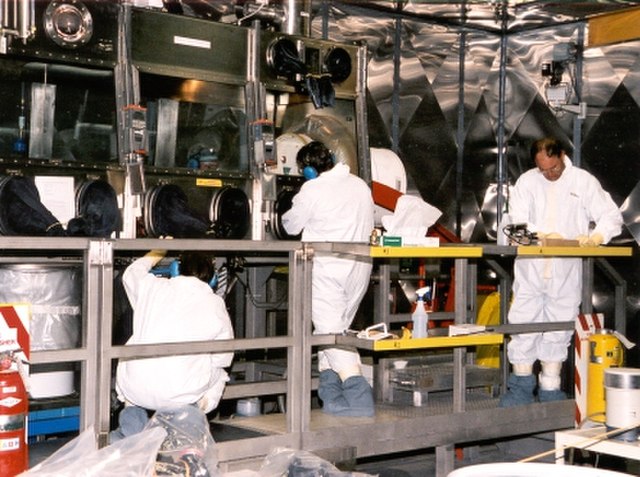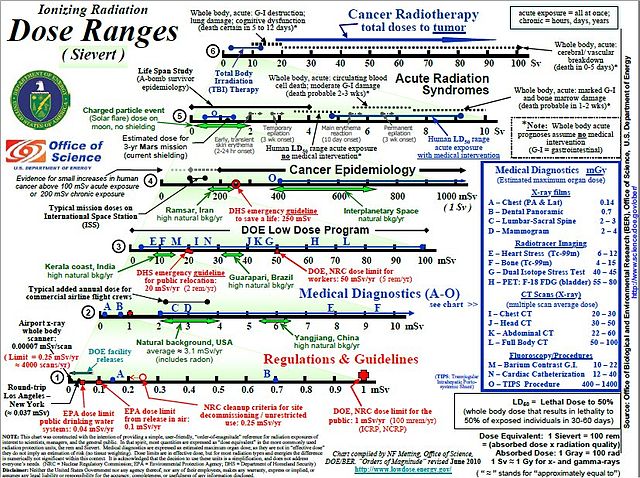Health physics, also referred to as the science of radiation protection, is the profession devoted to protecting people and their environment from potential radiation hazards, while making it possible to enjoy the beneficial uses of radiation. Health physicists normally require a four-year bachelor’s degree and qualifying experience that demonstrates a professional knowledge of the theory and application of radiation protection principles and closely related sciences. Health physicists principally work at facilities where radionuclides or other sources of ionizing radiation are used or produced; these include research, industry, education, medical facilities, nuclear power, military, environmental protection, enforcement of government regulations, and decontamination and decommissioning—the combination of education and experience for health physicists depends on the specific field in which the health physicist is engaged.
1947 Oak Ridge National Laboratory poster.
Radiation protection, also known as radiological protection, is defined by the International Atomic Energy Agency (IAEA) as "The protection of people from harmful effects of exposure to ionizing radiation, and the means for achieving this". Exposure can be from a source of radiation external to the human body or due to internal irradiation caused by the ingestion of radioactive contamination.
Large scale glovebox in the nuclear industry used to contain airborne radioactive particles.
USA Dept of Energy 2010 dose chart in sieverts for a variety of situations and applications.
A lead castle built to shield a radioactive sample in a lab, being a form of lead shielding.
Hand-held ion chamber survey meter in use for surface dose rate on one of three radioisotope thermoelectric generators (RTGs) for the Cassini spacecraft.





